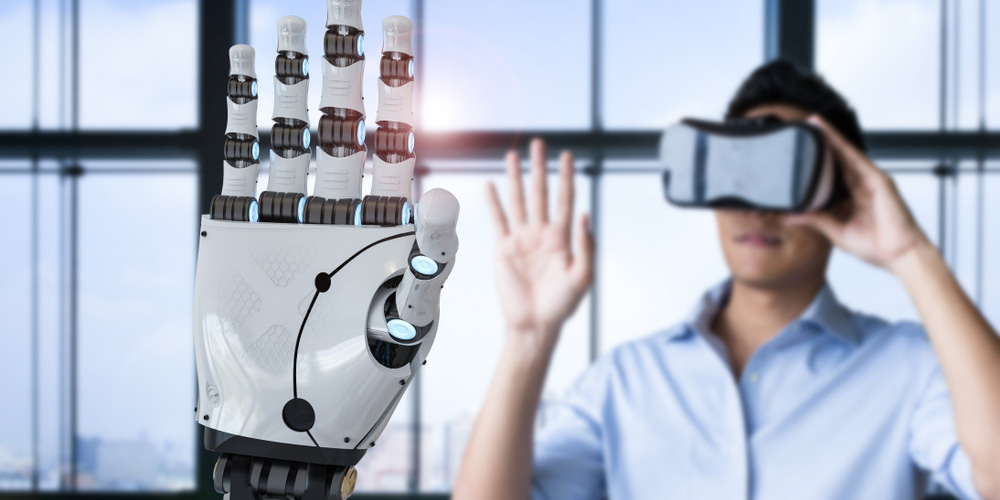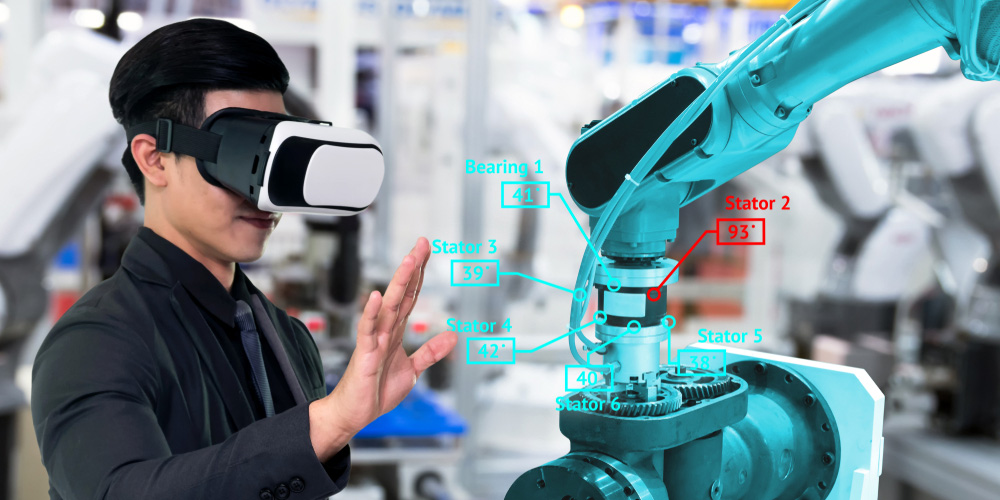Impacts of Hands-on Learning Approach in Higher Education

Let’s be transparent! Isn’t it that theory and practice often stand at odds in the present educational setup? Not only this, but the reality of traditional lecture-style teaching can be far from ideal.
When students find themselves in a lengthy lecture, they glance at the clock and their minds wander to weekend activities.
And, no one wants that!
However, Hands-on learning is a transformative approach where students learn by actively engaging in tasks and projects. It is a deliberate practice that bridges the gap between theory and mastery.
This method finds its truest application in careers demanding precision, such as medicine, mechanics, architecture, and agriculture. In these fields, innocuous errors can escalate into grave consequences.
Hands-on learning empowers instructors to guide students through mistakes within a secure and controlled environment, nurturing critical thinking skills.
In this blog, we will dive into the reasons that make this approach ideal for higher education colleges and universities.
What is Hands-On Learning Approach?
Hands-on learning is a dynamic and immersive educational approach that fundamentally differs from the traditional lecture-style teaching that often leans on rote memorization.
Instead of passively absorbing information, hands-on learning beckons students to become active participants in their own education, igniting a profound transformation in their understanding of the subject matter.
Experiential learning, often termed learning by experience, fundamentally alters the educational landscape.
It's similar to learning to swim by jumping into the water rather than reading about it in a book.
Students are thrown into the heart of their education, where they are encouraged to interact with real-world scenarios and apply their knowledge to practical situations.
This hands-on approach allows them to bridge the gap between theory and practice, forging a stronger and more enduring connection with the subject matter.
Through this approach, students are no longer passive recipients of knowledge!
Well, we can say that it transforms students to become architects of their learning journey.
They actively shape their understanding by engaging in tasks, experiments, and projects that require critical thinking and problem-solving skills.
This newfound sense of ownership over their education fosters not only a deeper comprehension of the material but also a heightened ability to retain and recall it.
Problem-solving skills, in particular, are honed to a razor's edge through hands-on learning.
In traditional educational settings, students often memorize facts and theories without fully grasping their real-world applications.
However, hands-on learning flips this script.
It encourages students to confront challenges, experiment with different solutions, and learn from their successes and failures.
The result?
By doing this, students cultivate invaluable problem-solving skills that are not confined to the classroom but can be readily applied in their future careers.
Importance of Hands on Learning in Higher Education

The significance of hands-on learning in higher education is profound and far-reaching, making it a necessary transformation in the way we educate future generations.
It's not an exaggeration to say that its impact can not be overstated.
✔️ Transforming Learning Outcomes
In the traditional lecture-style classroom, students often find themselves inundated with information, some of which may seem abstract or disconnected from real-world applications.
Agreed?
However, by immersing students in hands-on experiences, learning becomes tangible and relatable.
This transformational shift enhances comprehension and retention.
Thus, ensuring that knowledge is not just passively acquired but deeply ingrained.
But, the effects of experiential learning extend well beyond the classroom walls.
This approach of hands-on learning equips students with the practical skills and problem-solving abilities they need to navigate the complex challenges of the future.
Graduates of hands-on learning programs are better prepared for the dynamic nature of the modern workforce, where adaptability and the ability to apply knowledge are paramount.
Amazing. Isn’t it?
✔️ Immersive Learning and Spatial Learning
Hands-on learning promotes immersive learning experiences that leverage physical space to create dynamic learning environments, enhancing student engagement.
Spatial Learning in higher education encourages students to explore, interact, and collaborate in spaces designed to stimulate creativity and critical thinking.
These spaces are fertile ground for experiential learning, where students can experiment, fail, and learn from their mistakes in a safe and supportive environment.
✔️ Aligning Education with Industry Needs
By actively involving students in real-world scenarios and practical applications, experiential learning ensures that graduates are not just well-versed in theory but also adept at applying their knowledge effectively.
With the increase in the need for skilled employees, employers today are seeking graduates who not only possess academic credentials but can also hit the ground running in their respective fields.
Hands-on learning provides students with a competitive edge by instilling the skills, confidence, and hands-on experience needed to excel in their chosen careers.
This alignment with industry needs serves as a testament to the approach's practicality and relevance.
✔️ Versatility Across Disciplines
You need to note that the impact of Hands-On Learning is not confined to specific disciplines or fields of study.
Yes!
Its versatility shines through as it extends its benefits across various domains of knowledge.
Whether in the arts, sciences, engineering, or humanities, experiential learning adapts and thrives, nurturing minds and fostering holistic development.
✔️ Science and Engineering
Experiential learning encourages budding scientists and engineers to explore, experiment, and innovate.
It fosters a deep understanding of fundamental principles while instilling the critical skills necessary to tackle complex challenges.
✔️ Arts and Humanities
Creative writing workshops, art studios, and theatrical productions are rich environments for experiential learning.
These hands-on experiences allow students to immerse themselves in the creative process, leading to a deeper connection with their chosen field of study.
In the humanities, historical reenactments and debates bring history and literature to life, making learning not just a cerebral exercise but a vivid and engaging journey.
✔️ Business and Management
Business schools have embraced case studies, simulations, and real-world consulting projects to bridge the gap between theory and practice.
Students are challenged to make strategic decisions, solve complex problems, and collaborate in teams, mirroring the challenges they will face in the corporate world.
Hands-on learning in this context nurtures future leaders who are not just equipped with theoretical knowledge but also possess the practical acumen to drive organizational success.
✔️ Health Sciences and Medicine
Clinical rotations, medical simulations, and patient interactions are essential for developing the skills and empathy required in the medical field.
Experiential learning ensures that medical practitioners are not only well-versed in medical theory but also proficient in applying that knowledge to real-life patient care situations.
✔️ Environmental and Social Sciences
Within the environmental and social sciences, students engage in fieldwork, data collection, and community outreach programs.
These hands-on experiences not only deepen their understanding of complex issues but also empower them to contribute meaningfully to environmental conservation, social justice, and community development.
"Experience the Fun: Hands-On Learning Changes Higher Education, Making Learning Interactive, Exciting, and Unforgettable for Every Student"
Virtual Learning Environments and VR for Higher Education
The educational domain is constantly transforming because of the integration of innovative technologies.
And, central to the evolution is the integration of Virtual Learning Environments and Virtual Reality (VR) for higher education.
This is a symbiotic relationship that enhances the Hands-on learning Approach in unprecedented ways.
✔️ Virtual Learning Environments
Virtual Learning Environments (VLEs) have emerged as vital tools in the arsenal of educators committed to experiential learning.
These digital platforms offer a rich tapestry of resources, simulations, and interactive experiences that augment traditional classroom instruction.
VLEs provide students with opportunities to explore concepts, collaborate with peers, and delve into practical exercises, all within a virtual environment.
Along with hands-on learning, the standout feature of VLEs is their accessibility.
Regardless of geographical location, students can access these environments and engage with content at their own pace.
This flexibility not only accommodates diverse learning styles but also breaks down barriers, making quality education more inclusive and egalitarian.
 Get the App from Meta Store: Download Now
Get the App from Meta Store: Download Now
✔️ Virtual Reality for Higher Education
VR for higher education is an unbeatable innovation, especially in fields like VR Engineering, where hands-on experience traditionally involves expensive equipment and potential safety hazards.
Virtual reality simulations transport students into lifelike scenarios, allowing them to gain practical experience without setting foot in a physical laboratory.
With VR, an engineer can dismantle and reassemble complex machinery, conduct experiments in a controlled virtual space, and troubleshoot problems, all within the safe confines of a digital environment.
This immersive, risk-free learning experience not only enhances comprehension but also boosts students' confidence in their abilities.
And, not to forget, Simulation-based learning in VR goes beyond traditional classroom limitations.
Medical students can practice surgeries, aerospace engineering students can explore outer space, and history enthusiasts can step back in time, all in the virtual world.
The experiential learning in colleges that VR affords is just like a magic carpet ride through the curriculum, where textbooks and lectures come to life.
Furthermore, VR fosters a sense of presence and engagement that is often hard to achieve through conventional teaching methods.
Students feel as if they are physically present in the virtual world, heightening their immersion and deepening their understanding of complex concepts.
Conclusion
In conclusion, Hands-on learning, also known as the Hands-On Learning Approach or experiential learning, is redefining higher education.
Its emphasis on learning by experience is highlighting the importance of hands-on Learning in preparing students for the real world.
Through immersive learning experiences and spatial learning in higher education, students are engaging with their education in unprecedented ways.
The integration of technology, such as Virtual Reality for higher education and simulation-based learning, further enhances this transformative approach.
As we move forward, it's essential for colleges and universities to continue embracing experiential learning and create an environment where students can thrive.
By doing so, we ensure that the minds of tomorrow are well-equipped to tackle the challenges of an ever-evolving world.

.png)
.png)


.png)